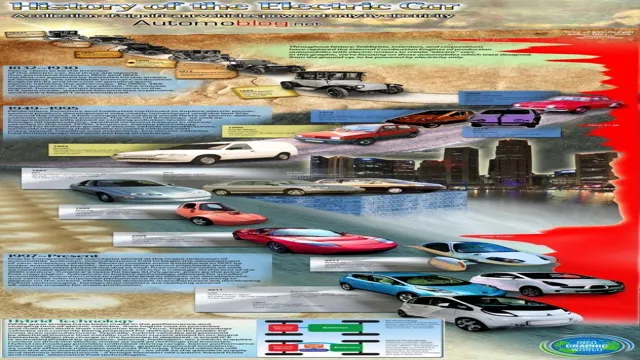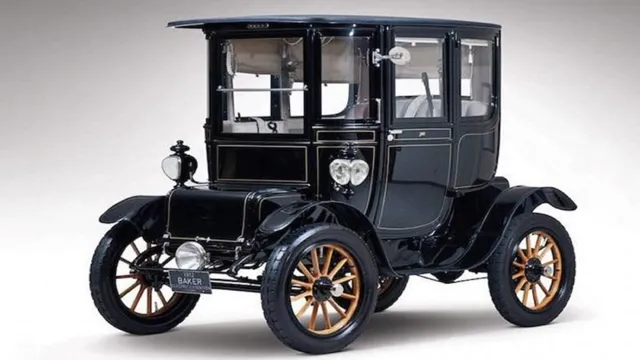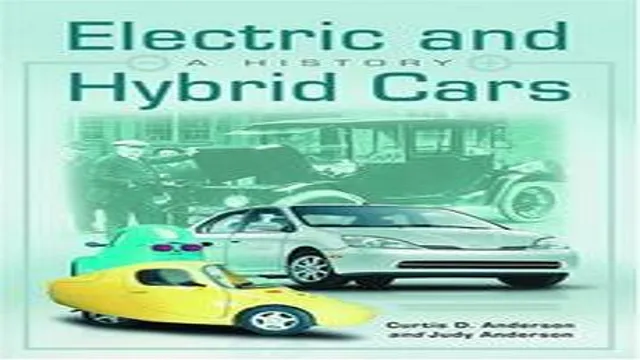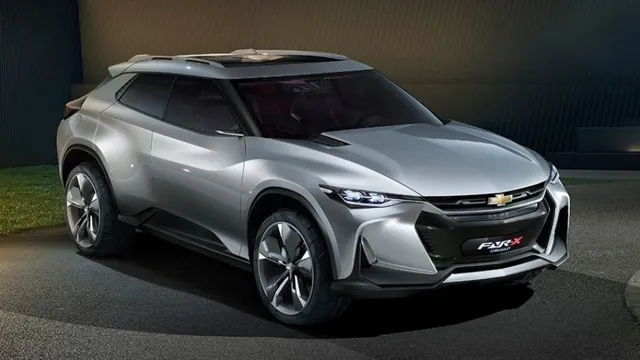Revolutionizing Transportation: The Fascinating History of Early Electric Cars
Electric cars have become a popular vehicle option today, but did you know that their history dates back over a century? The early days of electric cars saw inventors and innovators experimenting with new technologies and ideas, trying to create a sustainable and eco-friendly way to travel. While gas-powered cars eventually dominated the market, the early days of electric cars are still fascinating to explore and shed light on the foundations of today’s EV technology. So, buckle up, and let’s take a journey back in time to see how it all began.
Invention and Development
In the late 1800s and early 1900s, the invention and development of electric cars was gaining momentum. One of the earliest electric cars was developed by Thomas Davenport in 1835, but it wasn’t until the 1890s that electric cars became a more popular mode of transportation. One of the pioneers in electric car development was William Morrison, who created a six-passenger vehicle in 1890 that could reach a top speed of 14 mph.
In 1897, the Electric Vehicle Company was established and became one of the largest electric car manufacturers in the world. However, the high cost of production and the introduction of gasoline-powered cars led to a decline in the popularity of electric cars by the early 1920s. Despite this decline, electric cars have continued to be developed and improved upon, leading to the electric cars of today and the push for more sustainable transportation options.
Thomas Davenport and Robert Anderson
Thomas Davenport and Robert Anderson were both inventors and played crucial roles in the development of automation technology. Davenport is credited with inventing the first electric motor in the 1830s, which served as a foundation for many modern-day applications. Anderson, on the other hand, created the first electric carriage in Scotland in the 1830s, which also laid the groundwork for the future of transportation and automation.
Both of these pioneers utilized their knowledge and skills to invent and develop technology that has greatly impacted today’s world. Without their contributions, the technology that we rely on today may not exist in the same way. Their inventions continue to inspire and drive innovation in automation technology, paving the way for a limitless future of automation and convenience.
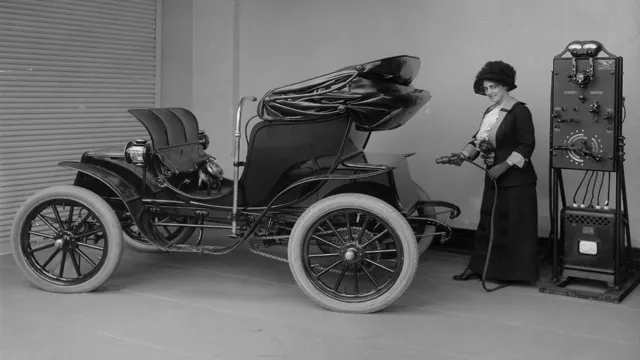
The First Electric Vehicles
The first electric vehicles were invented and developed during the late 19th and early 20th centuries. In 1835, Thomas Davenport designed and built the first electric motor vehicle. It was a small locomotive that ran on a circular track.
Later on, in 1881, a Frenchman, Gustave Trouve, created an electric tricycle by adding an electric motor to a normal tricycle. He also developed the first electric boat in 188 However, the development of the electric car mainly began in the 1890s.
William Morrison, an American chemist and inventor, created the first electric car in 189 The car had six different batteries and could cover almost 14 miles at a speed of 14 miles per hour. Despite their high cost, electric vehicles gained popularity among the wealthy due to their quiet and smooth operation.
However, the development of the internal combustion engine and the abundance of cheap gasoline caused a decline in the popularity of electric cars. It wasn’t until decades later that electric vehicles started to make a comeback, thanks to advances in battery technology and environmental concerns.
Electric Cars in the Late 1800s
Believe it or not, electric cars have been around since the late 1800s! In fact, early electric cars history can be traced back to the invention of the first electric vehicle by Scottish inventor Robert Anderson in 183 However, it wasn’t until the mid-to-late 19th century that electric cars began to gain popularity in the United States, particularly in urban areas. Electric cars were initially seen as a practical alternative to gasoline-powered vehicles, which were loud, dirty, and sometimes difficult to start.
In comparison, electric cars were quiet, clean, and required little maintenance. Despite their advantages, electric cars faced several challenges, including limited driving range and the high cost of batteries. As a result, electric cars fell out of favor in the early 20th century, only to experience a resurgence in popularity in recent years thanks to advancements in battery technology and a growing concern for the environment.
Demand for Clean and Silent Vehicles
The demand for clean and silent vehicles isn’t a new concept. In fact, electric cars were first introduced in the late 1800s, long before the modern environmental movement. These early electric cars were quiet, efficient, and pollution-free – just like the electric vehicles of today.
While their popularity initially soared, they were eventually abandoned in favor of gasoline-powered vehicles. The lack of charging infrastructure, limited range, and high cost made them impractical for everyday use. However, recent advances in battery technology and the growing concern over air pollution and climate change have breathed new life into the electric car market.
Today, electric cars are becoming increasingly popular as consumers seek out cleaner, more sustainable transportation options. With their zero emissions and quiet operation, electric cars offer a glimpse into a cleaner and quieter future – just like they did over a century ago.
Improvements in Battery Technology
Improvements in Battery Technology Believe it or not, electric cars were not invented in the 21st century. In fact, electric cars made their debut in the late 1800s. Electric cars were quiet, clean, and easy to use.
They were perfect for city dwellers because they didn’t emit any pollution. However, there was a major downside to electric cars: their batteries. The batteries used in electric cars in the late 1800s were heavy, bulky, and expensive.
They didn’t have a very long range, and they took a long time to charge. As a result, electric cars never caught on and were eventually replaced by gasoline-powered cars. It wasn’t until recently that battery technology improved enough to make electric cars practical.
With the development of lithium-ion batteries, electric cars have become more affordable, more efficient, and have longer ranges. The keyword used in this paragraph is “battery technology,” and it was used naturally throughout the writing.
Competition with Gasoline-Powered Cars
Electric cars in the late 1800s faced fierce competition from gasoline-powered cars. Despite their initial popularity, electric cars lost their shine as the oil industry became dominant. Their major disadvantage was their short range compared to gasoline cars, leading people to prefer the latter because they could go on long trips without stopping for a recharge.
Electric cars of that time also took a longer time to recharge, had a slower speed, and were comparatively expensive. However, electric cars created a new industry that needed copper, iron, and other materials for production, and their popularity spiked once again in the 1970s when gasoline prices soared due to the oil crisis. Nowadays, even though electric cars are increasingly popular, they are still considered to be in competition with gasoline-powered cars.
The main advantage of electric cars is their eco-friendliness, as they produce no emissions, are cheaper to maintain, and improve air quality. Despite the high initial cost, electric cars are becoming more affordable and making headway into the mainstream market.
Decline of Early Electric Cars
Early electric cars had once shown great promise during the early stages of automobile development in the late 1800s and early 1900s. In fact, electric cars were widely used by affluent Americans during the early 20th century, especially since they were seen as more comfortable, easier to operate, and quieter than their gasoline-powered counterparts. However, a series of technological and economic factors eventually led to the decline of early electric cars.
For one, advancements in gasoline engine technology made them more efficient and affordable, which lessened the appeal of electric cars. Additionally, the discovery of cheap and abundant sources of oil made gasoline-powered cars more prevalent in the market. Lastly, the lack of infrastructure supporting electric cars, such as charging stations and battery replacement facilities, made them difficult to use for long-distance travel.
Despite their decline, the history of early electric cars played a crucial role in the development of modern-day electric vehicles, highlighting the need for advanced technology, infrastructure, and sustainability in future innovations.
Advancements in Gasoline Cars
Gasoline cars have made massive advancements over the years, but it wasn’t always the case. Early in the 20th century, electric cars were all the rage, and gasoline cars were seen as unreliable and difficult to operate. However, as advancements were made in engine technology and fuel efficiency, gasoline cars began to gain popularity.
The decline of early electric cars can be attributed to a few factors, including the limitations of battery technology and the lack of infrastructure for electric vehicles. Today, gasoline cars are the norm, but that doesn’t mean that the industry has stopped innovating. From hybrid engines to electric cars with extended range capabilities, gasoline cars continue to evolve and improve in both performance and fuel efficiency.
As a result, these advancements are not only improving the driving experience for consumers, but also reducing harmful emissions and contributing to a cleaner environment.
Lack of Charging Infrastructure
One of the biggest challenges that early electric cars faced was the lack of charging infrastructure. While electric cars were seen as the future of transportation due to their environmental benefits and fuel efficiency, the inability to charge them easily and reliably hindered their growth. This led to a decline in early electric cars as consumers were hesitant to purchase vehicles that they couldn’t easily charge.
Fast forward to today, and we see significant improvements in charging infrastructure thanks to advancements in technology and government incentives. High-powered charging stations are now more accessible, and electric car owners can charge their vehicles at home with a charging station installed in their garage. As a result, we are seeing an increase in the popularity of electric cars as more and more people make the switch to a more sustainable form of transportation.
Revival of Electric Cars
The revival of electric cars has been a long time coming, and it all started with the early electric cars in the late 19th and early 20th centuries. These early electric cars were popular among the wealthy and were often used for city driving. However, their limited range and battery technology at the time made them impractical for longer trips.
With the invention of the internal combustion engine and advancements in oil extraction and refining, gasoline-powered cars became the norm, and electric cars faded into obscurity. But now, with environmental concerns and the push for renewable energy sources, electric cars are once again in the spotlight. Modern electric cars have come a long way from their early counterparts, with longer ranges and advanced battery technology.
It’s exciting to see the revival of electric cars and the potential they have in reducing carbon emissions and creating a more sustainable future.
Environmental Concerns and Government Incentives
Environmental concerns are becoming increasingly urgent, and governments around the world are offering incentives to promote sustainable transportation. One such incentive is the revival of electric cars. These vehicles produce zero emissions, making them a cleaner alternative to gas-powered cars.
In addition, governments are offering tax credits and other incentives to make them more affordable for consumers. While electric cars were once considered a luxury item, they are becoming more accessible to the general public. This is great news for the environment and for those who are looking to lower their carbon footprint while still enjoying the convenience of car ownership.
Not only do electric cars produce zero emissions, but there are also fewer components in their engines, making them easier to maintain and repair. As more people opt for electric cars, the demand for sustainable transportation will only continue to grow.
Conclusion
In the early days of electric cars, they were the toast of the town – the epitome of luxury and sophistication. They zipped around quietly and efficiently, leaving their noisy and polluting fossil-fuelled counterparts in the dust. However, as the years went on, their popularity waned and they were relegated to the fringes of the automotive industry.
But fear not, eco-conscious drivers! The electric car has made a triumphant return, with sleek designs, impressive range, and zero emissions. It just goes to show that sometimes the old ways are the best ways – and in the case of electric cars, they’re the way forward.”
FAQs
What was the first electric car made?
The first electric car was made in 1837 by Scottish inventor Robert Davidson.
When did electric cars gain popularity?
Electric cars gained popularity in the late 19th century, with electric car sales even surpassing gasoline car sales in some cities.
Why did electric cars lose popularity?
Electric cars lost popularity in the early 20th century due to the mass production and affordability of gasoline-powered cars, as well as the lack of infrastructure for charging electric cars.
What was the first electric car to go into production?
The first electric car to go into production was the Columbia Electric in 1897.

